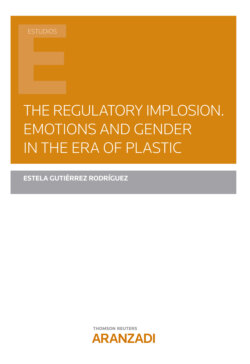Читать книгу The Regulatory Implosion. Emotions and Gender in the Era of plastic - Estela Gutiérrez Rodríguez - Страница 8
На сайте Литреса книга снята с продажи.
2.2. What are endocrine disrupting chemicals (EDC)?
ОглавлениеEndocrine disrupting chemical substance (EDC) is understood to be any artificial chemical substance with the capacity to create an alteration of the hormonal system in living beings6. This alteration ends up causing a modification in the functioning of the endocrine system, either by replacing, blocking or suppressing the natural connections between hormones and cells, consequently causing innumerable health disorders7.
Among the particularities of these pollutants, we find that they can reach the blood through the skin, through the digestive tract and even through the respiratory tract and be distributed throughout the body, which is easy to happen given the magnitude of exposure to these substances.
One of the difficulties in identifying the damage produced by EDC, is the fact that they are toxics “bioaccumulative” that is, in most cases, the human being must have a continuous and accumulated exposure to these substances in order the organism manifests some kind of diseases or health disorder related to these chemicals». Another one, is the high difficulty for the biodegradability8.
In addition, the factors of the disorders that these chemicals can cause in health are multifactorial, that is, although it is proven that they can produce cancer, multiple cognitive problems, depression, cause of diabetes or obesity, these same diseases are manifested by many others factors as well, which makes difficult the cause-effect relationship9.
The WHO report as early as 2002, evidenced the harmful effects of exposure to endocrine disrupting chemicals in the world ecosystem, both for human and animal health and for the environment as a whole10.
EDC substances according to the International Program for Protection against Chemical Products (PIPPQ), can be of two main types:
Synthetic hormones, including those identical to natural ones such as oral contraceptives, hormone replacement treatments and some additives in food for animals, designed with the intention of disrupting and manipulate the endocrine system.
Man-made chemicals designed for use in industry (eg, in certain industrial cleaners), agriculture (eg, in some pesticides), and in consumer goods (eg, in some plastic additives).
“This group also includes by-products of industrial processes such as dioxins, which are suspected of interfering with the endocrine systems of people and animals”11.
Well, let’s briefly see how these chemicals are being regulated, so that the reader can get an idea of the level of security that is currently guaranteed to us at the legal level.
